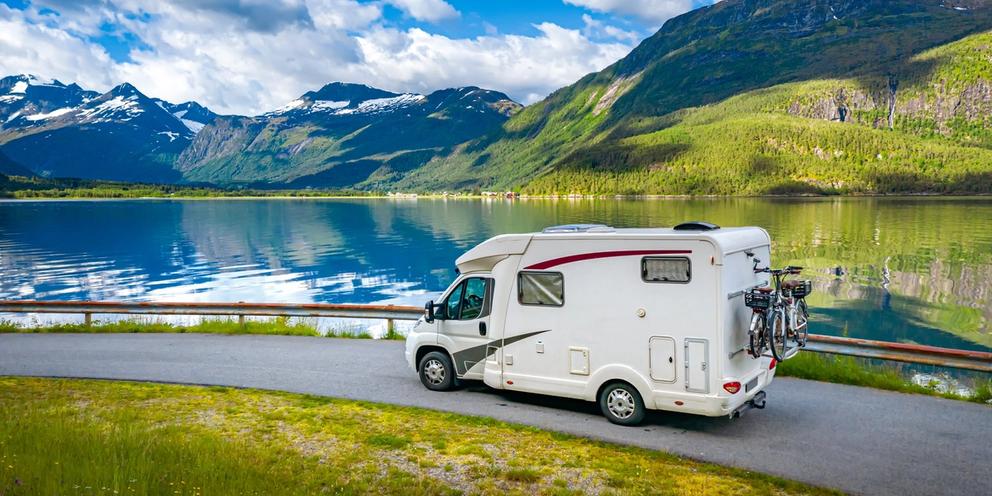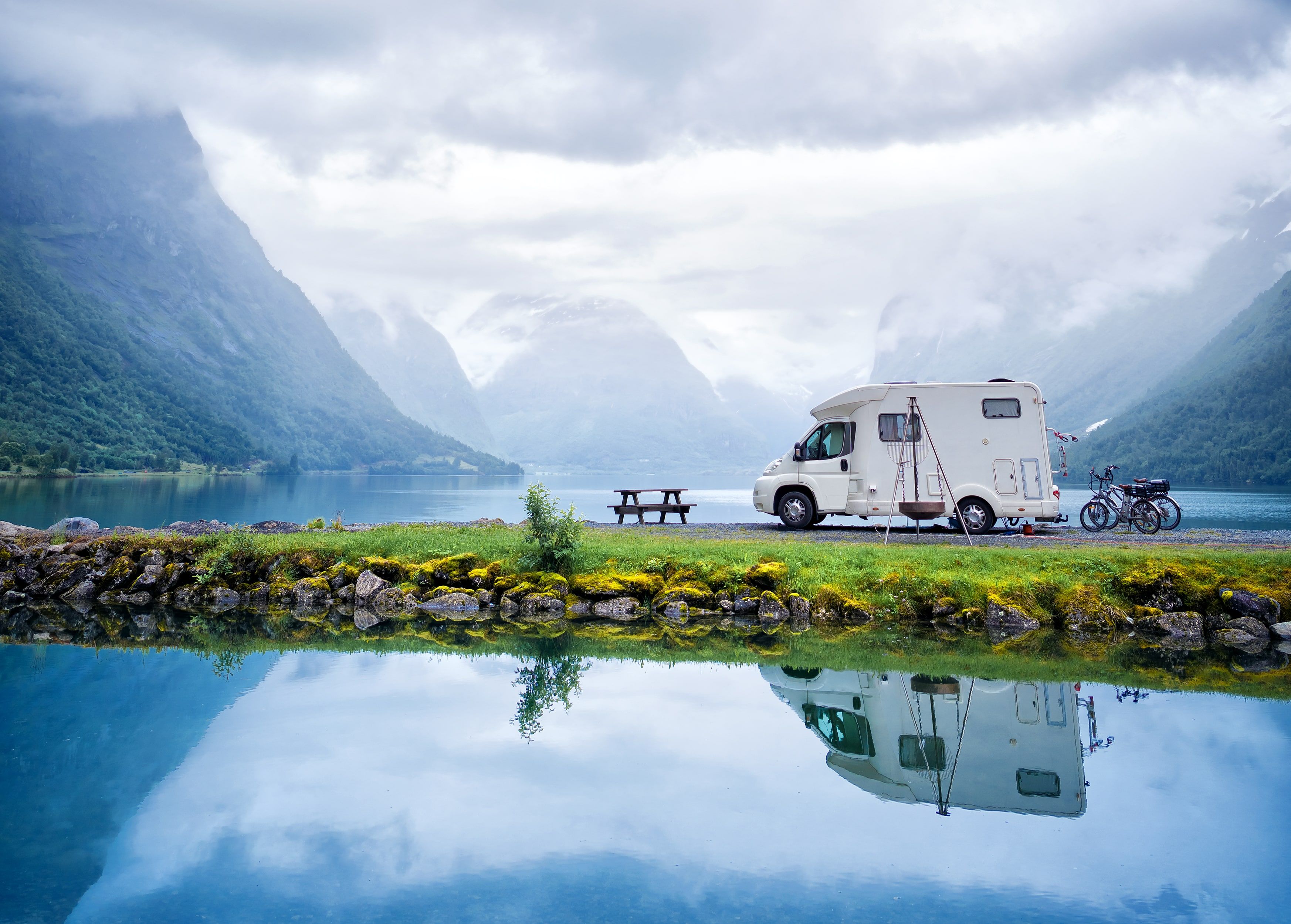
What Is the Easiest RV to Drive?
RVs are bigger than the average vehicle. Because of their large size, they are more challenging to drive. Anyone can learn to drive an RV; it’s just a matter of getting used to the size and weight of the vehicle. There are different kinds of RVs, and some are larger than others. In general, the bigger the RV, the more difficult it is to drive. Towable RVs also offer some added difficulties when parking or taking a U-turn. The easiest type of RV to drive is the class B RV. The driving experience of a class B RV is similar to that of a minivan or SUV. They are compact and have an excellent steering grip, making them safer and more manageable.
Source: Andrey Armyagov/Shutterstock.com
Keep Your RV Protected With A Quality Cover
What Are the Main Types of RVs?
There are five types of RVs available on the market: class A, class B, class C, fifth wheels, and travel trailers.
• Class A RV: This type of RV is the largest. They can be between 25-45 feet long and weigh around 12,000-30,000 lbs. Class A RVs usually include a kitchen, washroom, and a king-sized bed. Because of their massive size, they are challenging to maneuver.
• Class B RV: These are mid-sized RVs between 4,000-9,000 lbs. and 17-23 ft. These RVs are also called camper vans, and they have a decent amount of space. Thanks to their compact structure, they are the most uncomplicated RV to maneuver.
• Class C RV: This type of RV is similar to class A but without being so massive. It’s a model that offers the luxuries of Class A with a more modest size. They can weigh 10,000-12,000 and measure 21-28 ft.
• Fifth Wheel: A fifth wheel is a popular towing RV. It provides some of the benefits of large Class A models but without being massive. You need a 4x4 to tow them because of their weight. Usually, they are between 20-30 ft. long.
• Travel Trailer: A travel trailer is also a towing RV, but it’s generally smaller than a fifth wheel. It can be towed with a truck, car, or SUV.
What Makes Driving an RV Difficult?
Size and weight are the two main challenges when driving an RV. Most people aren’t used to the size of a large RV, and it can be difficult to make sharp turns or U-turns. Towable RVs are challenging to park, and you need little practice to become accustomed to parking it.
The average weight of an RV is 10,000 lbs. This additional weight makes it more difficult to stop than regular vehicles. You need to start braking early to give yourself enough braking distance. The wind drift can also be a problem, especially with very large RVs. The extra height of an RV increases the effect of wind. Taller RVs such as the class A and fifth wheel are pretty tall, and it’s not recommended to drive them in strong winds, especially over bridges.

Source: Mart Melchoi Sar/Shutterstock
Keep Your RV Protected with a Quality Cover
Which One Is Easier to Drive?
The easiest RV to drive is a class B for several reasons. Essentially, they weigh less and are more compact than class A and C models. This makes it less complicated to drive them. They are easy to drive in a city, while it can be trickier to drive large class A or C models in densely populated urban areas. There are also maintenance and fuel efficiency reasons that make driving a class B RV a lot easier. RV maintenance can be a challenge, from managing sewerage lines to checking rooftops for leakage.
A class B RV has minimal maintenance needs compared with larger models. The biggest maintenance issues are similar to those of a van or pickup, such as changing the oil and checking the fluids. However, if your class B features a small bathroom or combined wet area, you’ll need to clean and maintain the water tank, especially since these RV models have a smaller water tank capacity and cycle through water quickly. Class B RVs have better fuel consumption than class A or B RVs. Of course, they have fewer amenities due to their compact size, but they offer a nice economic advantage.

Source: Andrey Armyagov/Shutterstock.com
Protect Your RV with a Quality Cover
When traveling for long periods with an RV, the road can often take its toll on your vehicle. Therefore, it’s essential to take precautions to protect and maintain your RV. RVs are often left outside for long periods and exposed to the sun and harsh weather conditions. When camping, RVs can also be exposed to pollen, bird droppings, and dust, which can slowly damage the exterior paint of the RV.
To maintain your RV in excellent condition, take a look at our selection of RV covers. We carry a huge range of RV covers to match your make and model. For example, our Platinum Shield features multiple protective layers, including a fleece liner to preserve your RV’s clear coat and a reflective polyester outer layer to prevent UV damage and repel moisture. A rear elastic hem and adjustable tension panels ensure the perfect fit, making it ideal for indoor and outdoor use. At CarCovers.com, we provide custom car covers for all types of RVs, cars, SUVs, and other vehicles. Explore our website or contact us for more information on custom car covers.
Updated